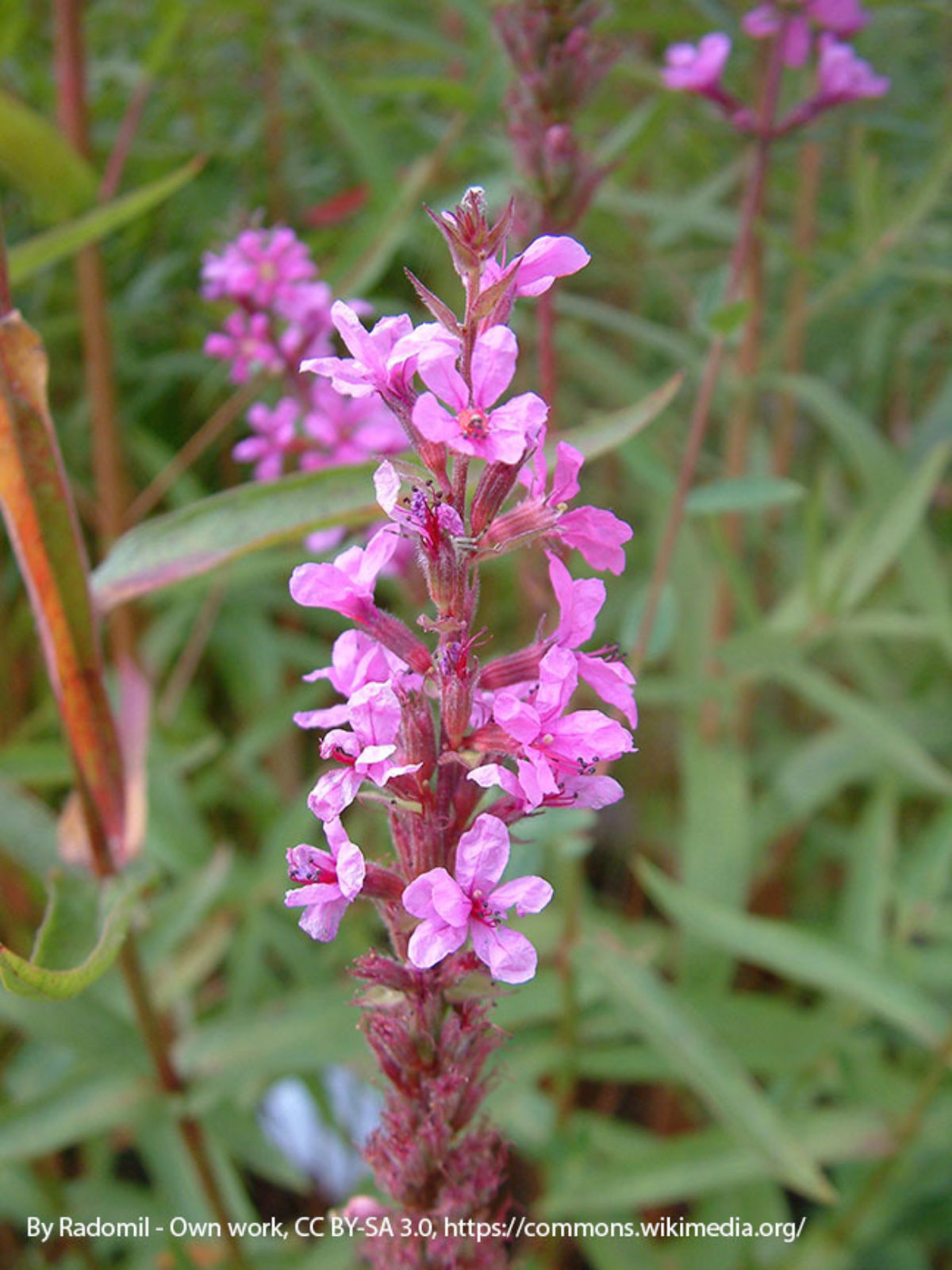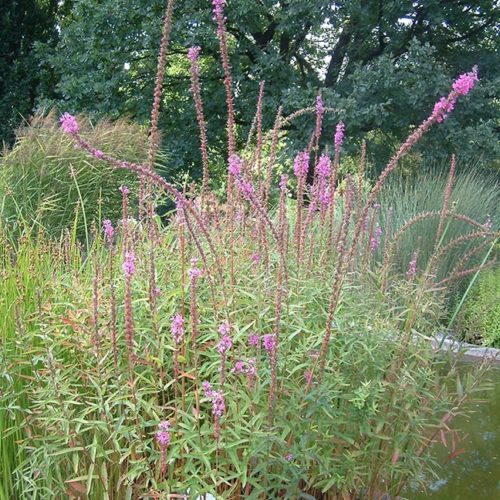Wand Loosestrife
Lythrum virgatum

Family: Lythraceae
Other Common Names: European wand loosestrife
Weed class: B
Year Listed: 1990
Native to: Europe and Asia
Is this Weed Toxic?:
not known to be
Legal listings:
WAC 16-752; WSDA Quarantine list (prohibited plant list)
Why Is It a Noxious Weed?
Wand loosestrife is difficult to distinguish from purple loosestrife and it too has the potential to invade and spread within wetlands. It is listed on the Washington State Department of Agriculture’s prohibited plants list (quarantine list).
How would I identify it?
General Description
Wand loosestrife is similar to purple purple loosestrife but is smaller, hairless and smooth (glabrous) with narrower leaves and flowers are mostly paired or clustered in leafy, open flower clusters (racemes).
Flower Description
Flower clusters 5.1 to 9.8 inches long, at stem ends (terminal). Flowers in 1-3 (up to 7) flowered sub-groups (axillary cymes) that are single or in sparse whorls. Narrow bracts are throughout flower cluster. Flower petals purple to pink.
Leaf description
Leaves are hairless, oppositely arranged (sometimes alternately), narrowly lance-shape to linear lance-shape with tapered bases. Leaf length: 1.2 to 5.1 inches; leaf width: by .1 to 1.6 inches.
Stem description
Stems are upright and 4-angled, growing up to 3.25 feet tall.
Fruit Seed Description
no info provided
May Be Confused With
Purple loosestrife and wand loosestrife can be difficult to tell apart, please contact your county noxious weed coordinator with plant identification questions.
Where does it grow?
It grows in home gardens, wetlands and other damp places that purple loosestrife can grow. It can grow in a wide range of soil types and light exposures. Please click here to see a county level distribution map of wand loosestrife in Washington.
How Does it Reproduce?
Wand loosestrife can reproduce from seed and vegetatively from cut segments.
How Do I Control It?
General Control Strategy
Please see the control information for purple loosestrife.
Mechanical Control
Small plants and seedlings can be dug out.
Herbicide Control
Please refer to the PNW Weed Management Handbook, or contact your county noxious weed coordinator.
For More Information
See our Written Findings for more information about wand loosestrife (Lythrum virgatum).
Efloras, Flora of China description with link to illustration of Lythrum virgatum.




